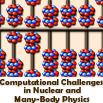Speaker
Gustavo Scuseria
Description
Unconventional Coupled Cluster Theories for Strong and Weak
Correlations
Coupled cluster (CC) theory with single and double
excitations accurately describes weak electron correlation
but is known to fail in cases of strong static correlation.
Fascinatingly, however, pair coupled cluster doubles
(p-CCD), a simplified version of the theory limited to pair
excitations that preserve the seniority of the reference
determinant (i.e., the number of unpaired electrons) has
mean field computational cost and is an excellent
approximation to the full configuration interaction (FCI) of
the paired space provided that the orbital basis is
optimized to adequately define a pairing scheme. In previous
work [1], we have shown that optimization of the pairing
scheme in the seniority zero FCI leads to a very accurate
description of static correlation. The same conclusion
extends to p-CCD [2] if the orbitals are optimized to make
the p-CCD energy
stationary [3]. The extension of this pair model to
quasiparticles will be addressed [4]. We additionally
discuss renormalized Hamiltonians via similarity
transformation based on Gutzwiller projectors and other
exponential forms to describe residual weak correlations [5].
[1] Seniority and orbital symmetry as tools for establishing
a full configuration interaction hierarchy, L. Bytautas, T.
M. Henderson, C. A. Jimenez-Hoyos, J. K. Ellis, and G. E.
Scuseria, J. Chem. Phys. 135, 044119 (2011).
[2] Seniority zero pair coupled cluster doubles theory, T.
Stein, T. M. Henderson, and G. E. Scuseria, J. Chem. Phys.
140, 214113 (2014).
[3] The optimization of molecular orbitals for coupled
cluster wavefunctions, G. E. Scuseria and H. F. Schaefer,
Chem. Phys. Lett. 142, 354 (1987).
[4] Quasiparticle coupled cluster theory for pairing
interactions, T. M. Henderson, G. E. Scuseria, J. Dukelsky,
A. Signoracci, and T. Duguet, Phys. Rev. C 89, 054305 (2014).
[5] Noncompact similarity transformed Hamiltonians for
lattice models, J. Wahlen-Strothman, C. A. Jimenez-Hoyos, T.
M. Henderson, and G. E. Scuseria, in preparation.

